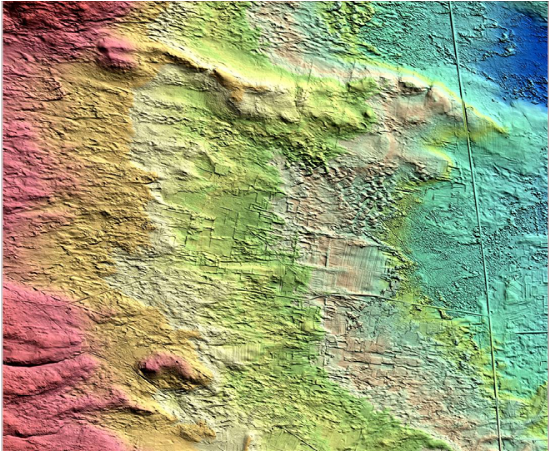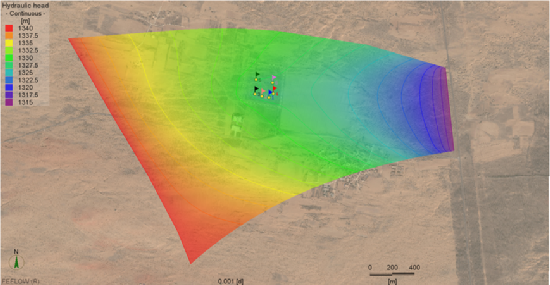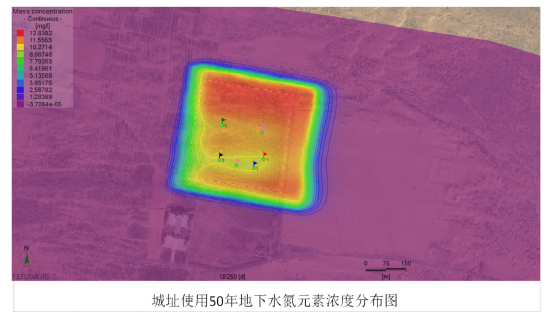New Progress in Environmental Archaeology of Zhangjiachang Ancient City in Yanchi, Ningxia | Lecture Newsletter
On November 24, 2023, the 6th session of the "Archaeological Science Forum" hosted by the Center for Archaeological Science, Sichuan University was held in the conference room on the first floor of the China Tibetology Research Institute, Wangjiang Campus, Sichuan University. LIU Decheng, associate researcher from the Aerospace Information Innovation Research Institute of the Chinese Academy of Sciences, gave a lecture on "New Progress in Environmental Archaeology of the Zhangjiachang Ancient City in Yanchi, Ningxia", which was hosted by YUAN Haibing, associate professor of the Center for Archaeological Science, Sichuan University.
The Zhangjiachang Ancient City Site is located in the west of Zhangjichang Village, Huamachi Town, northwest of Yanchi County, about 3 kilometers southwest of the Ming Great Wall's Erdaobian City Wall, and about 6 kilometers northeast of the Beida Pool Salt Lake. It is located on the southwestern edge of the Mu Us Desert and is one of the few well-preserved Han Dynasty ancient cities known to date.
LIU Decheng's research team has been conducting environmental archaeological surveys and research on the Zhangjiachang Ancient City Site since 2021. He first introduced the environmental background, ancient hydrology, and modern water systems of the site, and gave a detailed explanation of the Quaternary strata around the site, especially the strata and geomorphological development since the Late Holocene.

By interpreting the distribution range of the ancient city site and related geographical elements such as surrounding wetlands, deserts, bare land, water systems, and ancient river channels, digital elevation data of the area were obtained. A digital three-dimensional geological model was established through topographic analysis, and the ancient environment of the Zhangjiachang Ancient City Site was reconstructed. Through the particle size analysis of the soil layer of the ancient city excavation and the nearby accumulated aeolian sand, it was shown that a layer of alluvial stratum developed in the soil layer of the ancient city site, which revealed that the ancient city was once disturbed by floods.

The Zhangjiachang Ancient City was abandoned roughly after the Han Dynasty, which may indicate that the use of the ancient city caused damage to the environment or aggravated environmental degradation, resulting in insufficient environmental carrying capacity to make the area no longer suitable for living and difficult to maintain basic living. To solve this problem, the team creatively constructed a groundwater storage model of the ancient city during the Han Dynasty based on scientific and technological support, and used groundwater simulation technology to reproduce the impact of human activities on the groundwater level and water quality during the Han Dynasty. The research shows that the residents of the ancient city drawing well water in the city will cause the groundwater level to drop, and the drop range is closely related to the amount of water drawn. The supply of well water should be an important factor restricting the population growth of the ancient city.

At the same time, the domestic sewage of the ancients caused the deterioration of groundwater quality, which would cause the chemical elements such as nitrogen and phosphorus in the groundwater to seriously exceed the standard. Through the simulation of the daily water use of the residents of the ancient city, it can be seen that without groundwater pollution protection, human production and life do have an impact on the water quality of the ancient city, and groundwater pollution may be an important factor in the abandonment of the ancient city after the Han Dynasty.

HE Keyang, associate researcher at the Center for Archaeological Science, Sichuan University, made a comprehensive review. He pointed out that this environmental archaeological research case is very detailed and comprehensive. The core of environmental archaeology is to explore the relationship between people and the environment, including the impact of the environment on people and people's adaptation to the environment and active changes. Based on the case of the ancient city of the Han Dynasty, this study elaborates on the impact of floods on the location changes of the ancient city and the pollution of groundwater by human activities. The evidence is detailed and the argumentation is sufficient. Its thinking path is different from that of general environmental archaeological research. It adapts to local conditions and analyzes specific problems. It is very enlightening. In addition, the participating teachers and students had in-depth discussions on some specific issues involved in the lecture on groundwater simulation and groundwater pollution.
